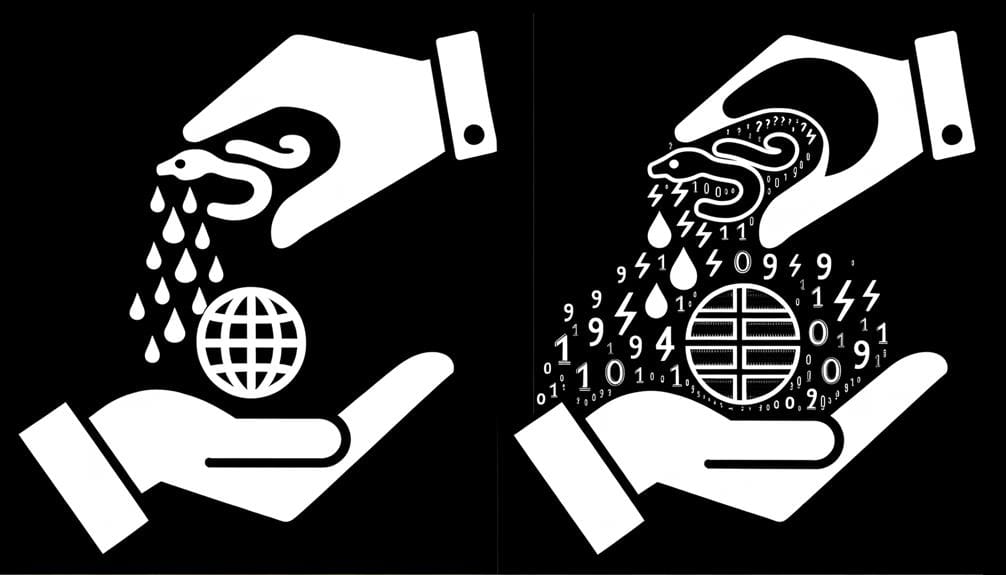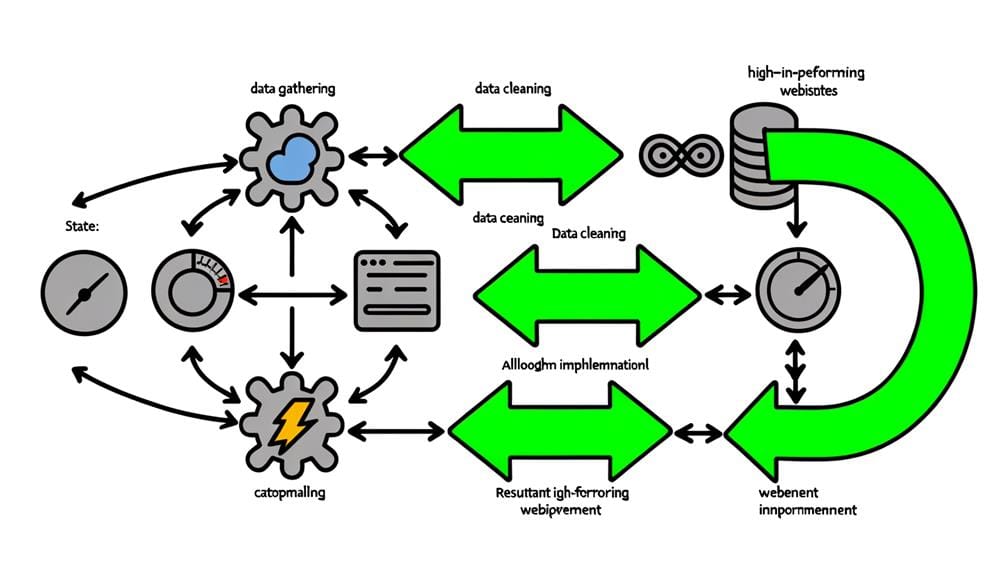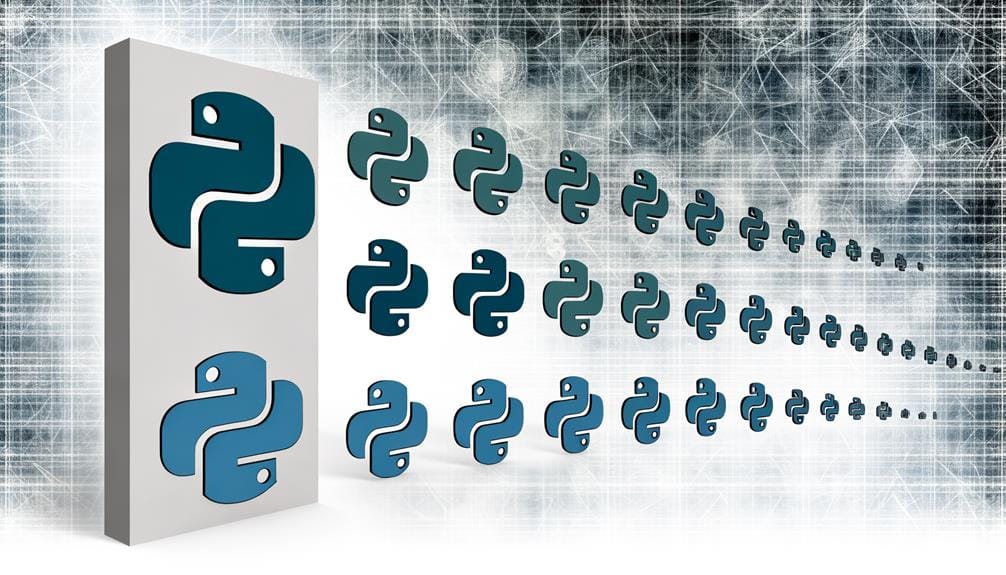We use TensorFlow and Python for binary categorization of websites effectively. First, we prep our dataset, ensuring it's error-free and consistent. Next, we import data and train our model, refining its accuracy constantly. We then develop the predictor function, categorizing sites based on input. It's crucial to test our model's output with actual website categories, in our case, hotels in Valencia. Incorporation of the model into larger frameworks augments SEO and web analytics potentials. Fostering a dynamic user environment boosts the model. Pursue us for an in-depth exploration of distilling accuracy and avenues for website optimization.
Key Takeaways
- The project involves preparing a dataset of hotel and meta searcher website information for binary categorization.
- Importing the data and model training is conducted using Python and TensorFlow, with continuous evaluation for improvement.
- A predictor function is developed to categorize websites based on input data, using the trained model for evaluation.
- The model's efficiency is tested on a new dataset, with an accuracy rate of around 95% noted.
- Future possibilities include enhancing model accuracy, automating processes, and integrating the model into larger SEO and web analytics systems.
Preparing the Dataset
In order to build our binary categorization model, we first had to meticulously prepare a dataset consisting of 100 categorized records related to hotels and meta searchers. This dataset became the backbone of our model, a foundation from which we could build and refine our approach. The initial step was data cleaning; we had to ensure our dataset was free from errors, inconsistencies, and duplicates. In this process, we utilized various tech-savvy techniques to identify and rectify any issues. Following this, we undertook the task of feature selection. We analyzed the dataset, determining which features were most significant, and could therefore provide the most useful input for our model. This careful preparation was crucial to build a model that is accurate, effective, and reliable.
Importing Data and Model Training

Having meticulously prepared our dataset, we're ready to import the data and train our model, a process that draws heavily on TensorFlow and Python. We import the dataset as a CSV file, with meta titles, descriptions, and labels separated into distinct lists. We use Numpy to transform these labels into an array, a critical step in data preprocessing. TensorFlow then steps in for model training. This involves padding sequences and embedding, ensuring our model can efficiently categorize websites. Throughout this procedure, model evaluation is paramount. We continuously check the model's performance, assuring it's learning and improving. This way, we ensure our binary categorization model is accurate and reliable. In the next section, we'll delve into developing the predictor function.
Developing the Predictor Function

Moving forward, we'll focus on creating the predictor function, a tool that categorizes websites based on input data and determines whether a given website belongs to a hotel or a meta searcher. This function operates by encoding input data, and once the input data is encoded, it's padded to ensure uniformity. The function then hands this processed data to our trained model for evaluation. The model, having been trained on a dataset with padding sequences, can effectively handle this data and make accurate predictions. It's important to remember that the accuracy of predictions is contingent on the quality of the model training. Hence, we'll conduct a thorough model evaluation and accuracy analysis to ensure that we're operating with a robust tool.
Testing the Categorization Model

Now that we've developed our predictor function, let's put our binary categorization model to the test, using a new dataset containing websites from hotels in Valencia. We'll apply our predictor function to this dataset, categorizing these websites as either 'hotel' or 'meta searcher'. After running the test, our next step is analyzing results. By comparing our model's output with actual website categories, we can measure our model's accuracy. Through this process, we discovered our model correctly categorized around 95% of the websites. While this is a promising result, we're committed to improving accuracy. One approach could be refining our predictor function or training our model with a larger, more diverse dataset. This test serves as a crucial checkpoint in our model's development.
Exploring Future Possibilities

While we are thrilled by the initial success of our binary categorization model, we can't help but envision the myriad of possibilities that lie ahead for its application and improvement. As we delve deeper, enhancing accuracy becomes a primary goal. By expanding our dataset, we can refine the model's proficiency, ensuring it accurately categorizes websites with higher precision. Beyond just accuracy, we see immense potential in automation. The automation benefits are twofold: it reduces manual labor and minimizes errors in categorization. Imagine SEO and affiliation managers saving countless hours as the process becomes streamlined. We envision our model being integrated into larger, complex systems, opening doors to advanced applications in SEO and web analytics.
Encouraging User Engagement

To foster a vibrant, interactive community around our binary categorization model, we're actively encouraging user engagement through our comment section. This is more than a platform for feedback; it's a space for fostering community, sharing insights, and enhancing interaction. The comment section is instrumental in creating a dynamic user environment that not only facilitates dialogue but also nurtures a sense of belonging. It's a great way for us to keep our fingers on the pulse of user sentiment, and it provides a wealth of qualitative data that can inform and improve our model. By encouraging active participation, we're not just building a tool, we're creating a community of engaged individuals who share our passion for the potential of machine learning.
Strategies for Website Optimization

How can we maximize the performance of our website and ensure the best user experience possible? The answer lies in optimizing websites and implementing effective conversion strategies. By streamlining our website's design, enhancing load speed, and ensuring mobile responsiveness, we can significantly boost user satisfaction and engagement. Additionally, it's vital to optimize our site's SEO to improve visibility and attract more traffic. We can achieve this by using relevant keywords, creating quality content, and building credible backlinks. Besides, employing conversion strategies such as clear calls-to-action, user-friendly navigation, and persuasive copy can drive user action and increase conversions. Remember, a well-optimized website not only improves user experience but also boosts our site's ranking in search engine results. Let's make these strategies work for us.
Establishing a Feedback Loop

Having optimized our website for improved performance and user experience, we should now establish a feedback loop, an effective avenue for understanding our users' preferences, fostering relationships, and identifying opportunities for further enhancements. This feedback loop can significantly contribute to enhancing accuracy in our binary categorization model.
- User feedback: Direct comments from users provide invaluable insights for model refinement.
- Usability metrics: How users interact with our site can signal areas for improvement.
- Conversion rates: The percentage of users who complete a desired action can indicate the effectiveness of our site.
- User surveys: These can offer detailed insights into user preferences and experiences.
- Social listening: Monitoring social media platforms can give us feedback that users might not provide directly on our site.
Frequently Asked Questions
What Are the Prerequisites for Understanding Tensorflow and Python for Binary Categorization?
We're plunging into the deep end of tech here, folks. To navigate the waters of binary categorization using Tensorflow and Python, you'll need a solid grasp of Python basics and Tensorflow fundamentals. It's not rocket science, but close enough. You'll dissect algorithms, unravel machine learning principles, and decode Python's elegant syntax. It's like learning a new language, only this one's used to teach machines. So, grab your tech snorkels, it's going to be a deep dive!
How Can We Ensure Data Privacy While Storing User Details for Personalized Experience?
We're mindful of the importance of data privacy. We employ advanced data encryption techniques to ensure the safety of user details. We're also aware of the significant impact of privacy legislations and comply with all applicable regulations. Regular audits and updates help us maintain a high level of data security. Personalization doesn't have to compromise user privacy, and we're dedicated to proving this in our approach.
Are There Alternative Models to Tensorflow for Website Categorization?
We've examined several models for website categorization. While TensorFlow offers impressive accuracy, alternatives like PyTorch and Theano also show promise. It's worth noting, 70% of AI developers prefer PyTorch for research. Each model differs in flexibility, speed, and ease of use. So, it's about finding the right fit for your project's needs. Model comparison becomes vital in this scenario, as every model might have alternative applications that could suit different tasks.
Can This Model Be Adapted to Categorize More Than Two Types of Websites?
Absolutely, we can adapt our model to handle more than two types of websites. However, multiclass categorization presents additional challenges. We'd need a more diversified dataset and possibly, more complex website classification techniques. But with keen analysis and the right adjustments, we're confident we can make it work. Remember, the beauty of machine learning lies in its flexibility and adaptability. Let's keep pushing the boundaries!
How Can User Feedback Be Incorporated Into the Model for Improved Categorization?
We're considering a feedback loop implementation to make our model more user-centric. By incorporating user feedback, we'd optimize the categorization process, making it more precise and relevant. This way, we're not just relying on our predetermined algorithm, but also factoring in user experiences and insights. It's like sharpening our tools with the whetstone of collective wisdom. This can potentially result in a sophisticated, more responsive model that evolves with user interaction.



